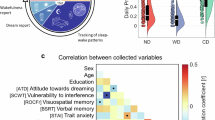Abstract
Day dreaming and mind wandering are common phenomena that use mental energy and can be distracting. A common strategy employed against day dreaming is doodling (simple unfocused drawing made while a person’s attention is otherwise occupied). Jackie Andrade (2009) reported that, doodling help people manage distractions which in turn leads to improved performance on memory tasks. The present study tries to evaluate the hypothesis whether the benefits of doodling vary across retrieval strategies (recall vs recognition). In the present experiment two groups (retrieval strategy: recall vs recognition) of participants (32 = 16 + 16) with mean age 19.8 ± 2 yrs were involved in a doodling task while a boring story was played in the background. This was followed retrieval tests of information embedded in the audio story. One way analysis of variance (dependent: memory accuracy, independent: recall vs recognition) reported main effects of retrieval strategy (F 1, 30 = 3.428, p = 0.07, Mean recognition = 4.625 ± 2.5, Mean recall = 3.125 ± 1.4). Pearson correlation between doodling percentage and memory accuracy reported r = −0.05, p = 0.77). The results Doodling benefits memory retrieval using recognition over recall. However this benefit is independent of amount of doodling.


Similar content being viewed by others
References
Andrade, J. (2009). What does doodling do? Applied Cognitive Psychology, 24, 100–106.
Anderson, J., & Bower, G. (1972). Recognition and retrieval process in free recall. Psychological Review, 79, 97–123.
Bahrick, H., & Bahrick, P. (1964). A re-examination of the inter-relations among measures of retention. Quarterly Journal of Experimental Psychology, 16, 318–324.
Brown, J. (1965). A comparison of recognition and recall by a multiple response method. Journal of Verbal Learning and Verbal Behavior, 4, 401–408.
Cabeza, R., Kapur, S., Craik, F., McIntosh, A., Houle, S., & Tulving, E. (1997). Functional neuroanatomy of recall and recognition: A PET study of episodic memory. Journal of Cognitive Neuroscience, 9, 254–265.
David, R., Sutherland, N., & Judd, R. (1961). Information content in recognition and recall. Journal of Experimental Psychology: General, 61, 422–429.
Do, S., & Schallert, D. (2004). Emotions and classroom talk: Toward a model of the role of affect in students’ experiences of classroom discussions. Journal of Educational Psychology, 96, 619–634.
Gillund, G., & Shiffrin, R. (1984). A retrieval model for both recognition and recall. Psychological Review, 91, 1–67.
Hickson, S., & Reed, W. (2009). Do constructed-response and multiple-choice questions measure the same thing? University of Canterbury, New Zealand: Department of Economics & Finance. Working Paper No. 08/2009.
Kintsch, W. (1970). Models of free recall and recognition. In D. A. Norman (Ed.), Models of human memory. New York: Academic.
Kintsch, W. (1974). The representation of meaning in memory. New York: Lawrence Erlbaum.
Klinger, E. (1971). Structure and Functions of Fantasy. New York: Wiley.
McNulty, J. (1965). An analysis of recall and recognition process in verbal learning. Journal of Verbal Learning and Verbal Behavior, 4(5), 430–436.
Muter, P. (1978). Recognition failure of recallable words in semantic memory. Memory and Cognition, 6(1), 9–12.
Postaman, L. (1975). Tests of generality of the principles of encoding specificity. Memory & Cognition, 3(6), 663–672.
Reder, L., Anderson, J., & Bjork, R. (1974). A semantic interpretation of encoding specificity. Journal of Experimental Psychology, 102, 648–656.
Schot, G. (2011). Doodling and the default network of the brain. The Lancet, 378, 1133.
Singer, J. (1996). Daydreaming. New York: Plenum Press.
Smallwood, J., O’Connor, R., Sudbury, M., & Obonsavin, M. (2007a). Mind wandering and Dysphoria. Cognition and Emotion, 21, 816–842.
Smallwood, J., Fishman, D., & Shooler, J. (2007b). Counting the cost of absent mind: mind wandering as an unrecognized influence on educational performance. Psychonomic Bulletin & Review, 14, 230–236.
Smallwood, J., & Schooler, J. (2006). The restless mind. Psychological Bulletin, 132, 946–958.
Teasadale, J., Proctor, L., Lloyds, L., & Baddeley, A. (1993). Working memory and stimulus independent thought: effects of memory load and presentation rate. European Journal of Cognitive Psychology, 5, 417–433.
Tulving, E. (1968). When recall is higher than recognition? Psychonomic Science, 10(2), 53–54.
Tulving, E. (1972). Episodic and semantic memory. In E. Tulving & W. Donaldson (Eds.), Organization of Memory. New York: Academic.
Tulving, E., & Thompson, D. (1973). Encoding specificity and retrieval processes in episodic memory. Psychological Review, 80, 352–373.
Tulving, E. (1976). Ecphoric processes in recall and recognition. In J. Brown (Ed.), Recall and Recognition. London: John Wiley & Sons.
Walker, I., & Hulme, C. (1999). Concrete words are easier to recall that abstract words: Evidence for a semantic contribution to short term serial recall. Journal of Experimental Psychology: Learning Memory and Cognition, 22(1), 55–62.
Watkins, M., & Tulving, E. (1975). Episodic memory: When recognition fails. Journal of Experimental Psychology: General, 104, 5–29.
Wilson, K., & Korn, J. (2007). Attention during lectures: Beyond ten minutes. Teaching of Psychology, 34, 85–89.
Author information
Authors and Affiliations
Corresponding author
Rights and permissions
About this article
Cite this article
Singh, T., Kashyap, N. Does Doodling Effect Performance: Comparison Across Retrieval Strategies. Psychol Stud 60, 7–11 (2015). https://doi.org/10.1007/s12646-014-0293-3
Received:
Accepted:
Published:
Issue Date:
DOI: https://doi.org/10.1007/s12646-014-0293-3




